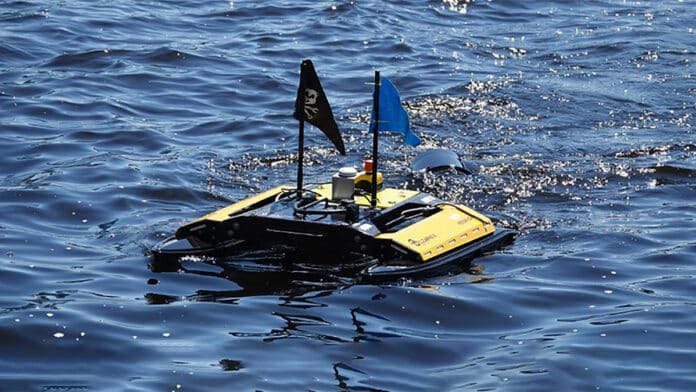Aurora Flight Sciences, a Boeing company, has been putting its “Fast Adaptation and Learning for Control Online” (FALCON) control architecture to the test on the waters of the Charles River in Boston, Massachusetts.
The latest tests demonstrated relative vessel-to-vessel station keeping for an underway replenishment (UNREP) scenario and automated passage through the Suez Canal. In each scenario, an autonomously controlled, unmanned surface vessel (USV) overcame various disturbances by employing adaptive control to complete the mission.
The work is part of a seedling program that provides support to the Defense Advanced Research Projects Agency’s (DARPA) Learning Introspective Control (LINC) program. The team working on this project includes Aurora, the Massachusetts Institute of Technology (MIT) Aerospace Controls Laboratory, and the MIT Marine Autonomy Laboratory (PavLab).
They are focused on developing and testing machine learning-based introspection technologies that allow uncrewed surface vessels to adapt their control laws when they encounter unanticipated conditions during operation. This enables the vehicles to autonomously adjust their control for the safe and successful completion of tasks.
Underway replenishment, or UNREP, is an important task for the US Navy to resupply ships at sea and keep them mission-ready. Traditionally, this required helmsmen to manually perform the task on both the receiving and delivery vessels. However, Aurora has demonstrated how this task could be accomplished autonomously using a small USV.
The autonomous system was able to handle disturbances such as thruster failure and the difficult-to-model Venturi effect, which conventional controllers were unable to compensate for. Thanks to Aurora’s control architecture, the mission was completed successfully.
For the Suez Canal scenario, the team recreated the conditions that led to a 2021 incident involving a vessel named Ever Given, which blocked the Suez Canal for six days. The Venturi effect seems to have been one of the contributing factors to the incident.
The team simulated it on the Charles River using a virtual canal and a small USV. Aurora’s controller was able to handle the various disturbances created during the experiment, while the conventional controller failed. Aurora’s controller quickly regained vehicle control and provided safe vehicle operation through the virtual canal.
The FALCON program is making progress and will soon be deployed on larger vessels. The adaptive control architecture is quite versatile and applicable to a variety of complex platforms, including air and land vehicles. It can operate both as an advisor and aid to current platforms or be fully integrated, as demonstrated in the LINC program, where two autonomous vehicles operate collaboratively.
